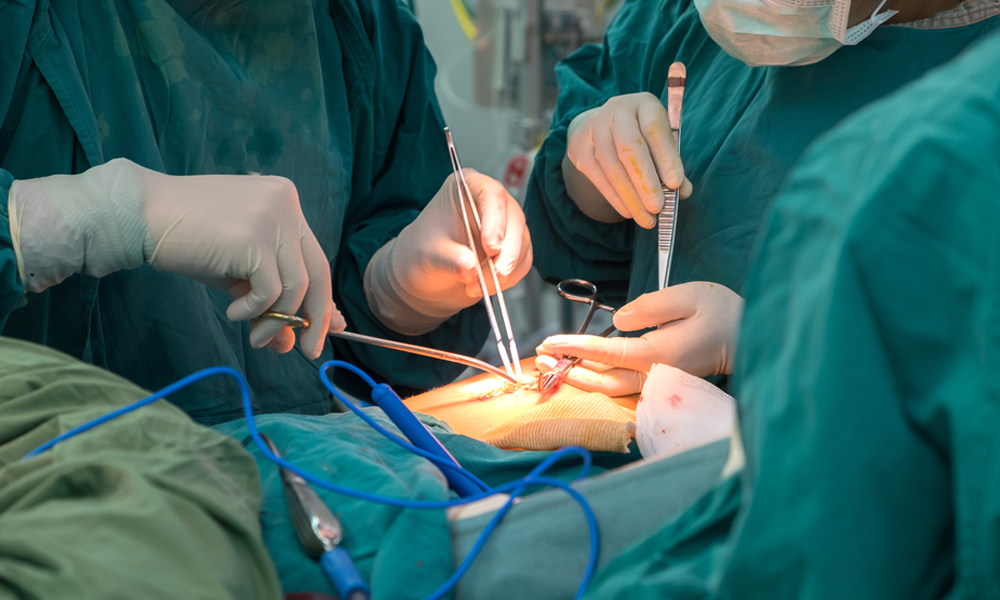-
 Toll Free No 9146-744-744
Toll Free No 9146-744-744 - Appointment
The Coronary Artery Bypass Graft, or CABG, is done when a waxy substance called plaque causes CHD (blockages in the arteries which supply heart muscles).
Plaque might harden or burst over time (break open). The coronary arteries narrow when plaque hardens causing Angina.
In CABG a healthy artery or vein from the body is transplanted to the occluded coronary artery during CABG. The grafted artery or vein circumvents (or bypasses) the blocked part of the coronary artery opening up a new channel for oxygen-rich blood to reach the heart muscle.
People with severe coronary heart disease (CHD) who are at risk of having a heart attack are treated with coronary artery bypass grafting (CABG) i.e. Heart Bypass Surgery before or after a heart attack. People with obstructive coronary artery disease stand to profit the most from CABG surgery.
This condition is characterized by restricted or blocked coronary arteries, which result in a lack of oxygen supply to the heart. If other treatments, including as medication or lifestyle changes, have failed, doctors may consider CABG. Individuals who have had a major heart attack may also require an emergency CABG.
If you have blockages in your coronary arteries that cannot be addressed with angioplasty, CABG is best option.
Our doctor will determine whether you are a candidate for CABG by looking at things like:

When at least one major artery must be bypassed, traditional CABG is utilized. The chest bone is opened to gain access to the heart during surgery. Medications are used to halt the heart, and a heart-lung bypass machine maintains blood and oxygen flowing throughout the body while the surgery is being performed. This enables the surgeon to operate on a still heart. Blood flow to the heart is restored following surgery. The heart usually begins to beat again on its own. To restart the heart, modest electric shocks are sometimes employed.
MINIMALLY INVASIVE DIRECT CORONARY ARTERY BYPASS GRAFTING
Because the chest bone isn’t opened to reach the heart, this procedure varies from typical CABG. Instead, many small cuts are made between the ribs on the left side of the chest. This procedure is mostly used to bypass blood vessels near the heart’s front. Bypass grafting using minimally invasive techniques is a relatively novel treatment. It isn’t appropriate for everyone, particularly if more than one or two coronary arteries must be bypassed.
A surgeon inserts a deflated balloon into your coronary arteries using a specific tube. They inflate the balloon as it arrives in the obstructed segments, widening the obstructed sections. It usually occurs in conjunction with the placement of a stent, a wire mesh tube that props open your artery.
A minimally invasive heart surgery is done through very small cuts in the chest. With use of small instruments and robot-controlled tools, surgeons can now perform the surgery a way much less invasive than open-heart surgery. The main benefit of robotic cardiac surgery is being a minimally invasive as compared to open-heart surgery; the patient could heal faster and return to normal activities more quickly. The Robotic cardiac surgery may also be used to:
The traditional vein graft patency is frequently limited by degeneration. Studies have indicated that rigid external support of venous grafts by flexible, tubular Nitinol mesh may improve the graft patency with no complications directly related to the implantation of mesh-supported grafts.


In recent times CABG is a relatively safe surgery compared to in the past but CABG is a major surgery; therefore there are some risks and problems to consider. While the majority of the risks and complications can be avoided or treated. At the expert hands the minor risks are minimized considerably.
Arterial and Venous grafts are used as per the need of the diseased coronaries. Commonest are the internal thoracic (mammary) artery (ITA) grafts which show best long term results. Thus, it is most commonly used bypass graft.
It takes between 3-6 hours and requires general anesthesia.
The major complications associated with CABG are myocardial infarction, stroke, and infection, prolonged necessity of mechanical ventilation, acute kidney injury, and bleeding requiring transfusion or reoperation.
All normal activities can be done with utmost care. Your surgeon will specify the restrictions according to your health condition. Usually, lifting heavy weights, climbing stairs, driving is prohibited for the initial few weeks.
Among the patients with coronary artery disease with blocked arteries of varying extent, only about 10% will undergo CABG surgery.
Usually, patients tend to do very well after the surgery and most get a good 15 years before needing another intervention.
A stress echocardiogram may be recommended by your doctor to check for coronary artery issues. An echocardiogram on the other hand, cannot reveal any blockages in the heart's arteries. It gives us an idea about the pumping action of the heart , valvular heart disease and its structural abnormalities.
Heart-related ailments such as first heart attack, heart valve surgery, and CABG are covered in Health Insurance. Our HospiOne Team will assist you in the procedure.
OUR PROCESS IS EASY contact us for More information.
Copyright © 2023 hospione.com - All Rights Reserved | Developed by Digital Marketing StudioGenix LLP